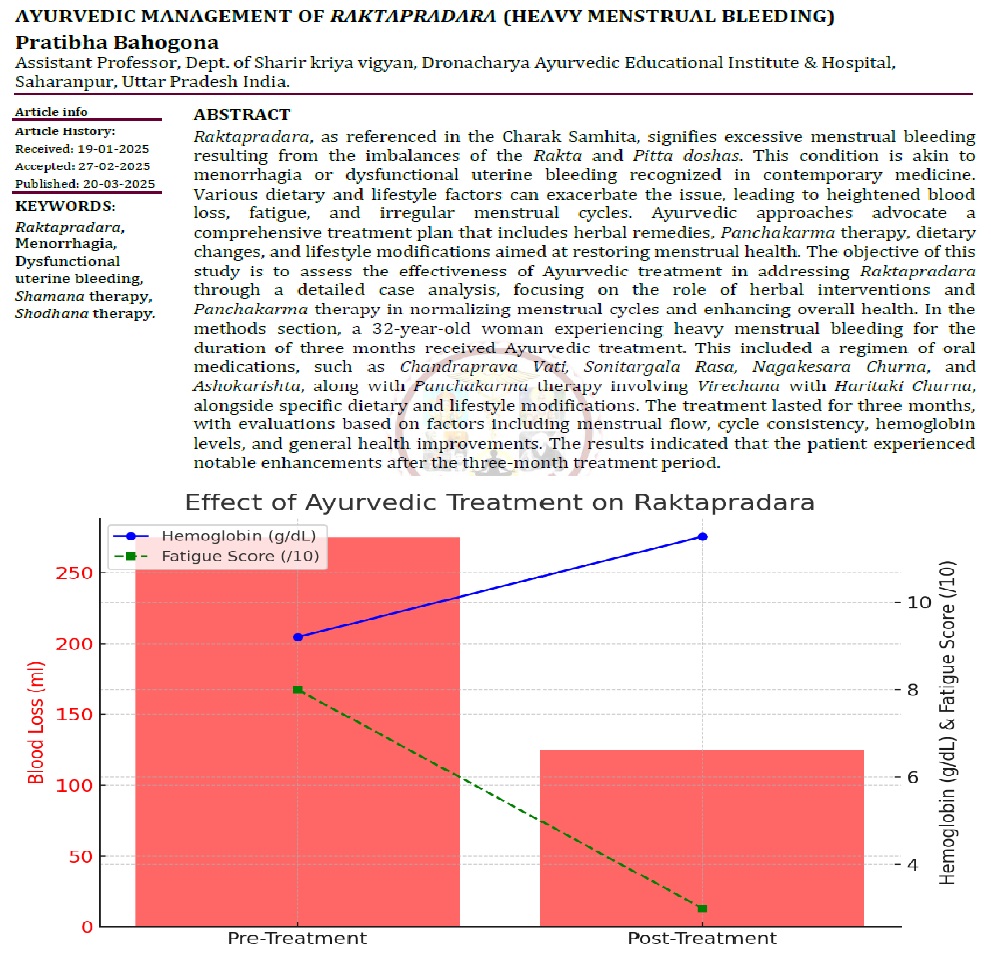Ayurvedic Management of Raktapradara (Heavy Menstrual Bleeding)
DOI:
https://doi.org/10.47070/ayushdhara.v12i1.1946Keywords:
Raktapradara, Menorrhagia, Dysfunctional uterine bleeding, Shamana therapy, Shodhana therapyAbstract
Raktapradara, as referenced in the Charak Samhita, signifies excessive menstrual bleeding resulting from the imbalances of the Rakta and Pitta doshas. This condition is akin to menorrhagia or dysfunctional uterine bleeding recognized in contemporary medicine. Various dietary and lifestyle factors can exacerbate the issue, leading to heightened blood loss, fatigue, and irregular menstrual cycles. Ayurvedic approaches advocate a comprehensive treatment plan that includes herbal remedies, Panchakarma therapy, dietary changes, and lifestyle modifications aimed at restoring menstrual health. The objective of this study is to assess the effectiveness of Ayurvedic treatment in addressing Raktapradara through a detailed case analysis, focusing on the role of herbal interventions and Panchakarma therapy in normalizing menstrual cycles and enhancing overall health. In the methods section, a 32-year-old woman experiencing heavy menstrual bleeding for the duration of three months received Ayurvedic treatment. This included a regimen of oral medications, such as Chandraprava Vati, Sonitargala Rasa, Nagakesara Churna, and Ashokarishta, along with Panchakarma therapy involving Virechana with Haritaki Churna, alongside specific dietary and lifestyle modifications. The treatment lasted for three months, with evaluations based on factors including menstrual flow, cycle consistency, hemoglobin levels, and general health improvements. The results indicated that the patient experienced notable enhancements after the three-month treatment period.
Downloads

Downloads
Published
Issue
Section
License
Copyright (c) 2025 AYUSHDHARA

This work is licensed under a Creative Commons Attribution-NonCommercial-ShareAlike 4.0 International License.


